I'm trying to solve the following problem:
A rectangular paper sheet of M*N is to be cut down into squares such that:
- The paper is cut along a line that is parallel to one of the sides of the paper.
- The paper is cut such that the resultant dimensions are always integers.
The process stops when the paper can't be cut any further.
What is the minimum number of paper pieces cut such that all are squares?
Limits: 1 <= N <= 100 and 1 <= M <= 100.
Example: Let N=1 and M=2, then answer is 2 as the minimum number of squares that can be cut is 2 (the paper is cut horizontally along the smaller side in the middle).
My code:
cin >> n >> m;
int N = min(n,m);
int M = max(n,m);
int ans = 0;
while (N != M) {
ans++;
int x = M - N;
int y = N;
M = max(x, y);
N = min(x, y);
}
if (N == M && M != 0)
ans++;
But I am not getting what's wrong with this approach as it's giving me a wrong answer.
